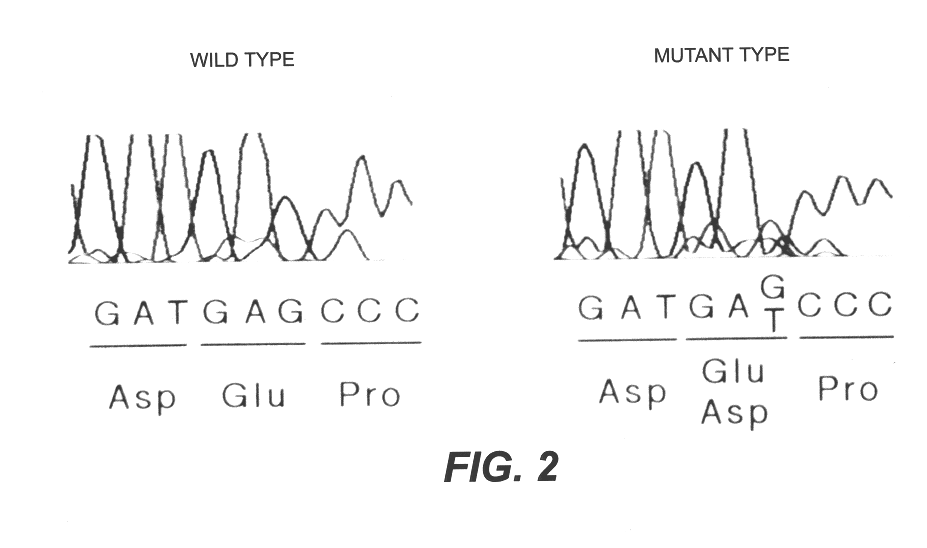Diagnosis of diseases associated with coronary twitching
a disease and disease technology, applied in the field of diagnosis of diseases associated with coronary twitching, can solve the problems of unknown mechanism of coronary spasm, and achieve the effect of facilitating high-sensitivity detection of mutations
- Summary
- Abstract
- Description
- Claims
- Application Information
AI Technical Summary
Benefits of technology
Problems solved by technology
Method used
Image
Examples
example 1
Detection of the mutation in exon 7 in the eNOS gene
Subjects are 96 patients having coronary spastic angina and 86 controls. All of the patients having coronary spastic angina undergo spontaneous stroke at rest (male 53, female 43, mean age 61, ages 33-86). Heart catheter examination has been performed on all patients to confirm coronary spasm induced by acetylcholine or ergonovine over coronary arteriography, as well as to confirm significant ST-T change over electrocardiogram (7,8). Significant constriction in coronary artery were not found in all patients (>75%).
Among 86 controls, 61 construct a breast pung group, 12 construct a group which is abnormal in electrocardiogram, and 13 construct a group Coronary arteriography revealed that no one in the controls has significant constrictions. When coronary spasm-inducing test was performed on 61 subjects of the breast pung group and 12 subjects of the group which is abnormal in electrocardiogram by coronary dosage of acetylcholine or ...
example 2
Detection of the mutation in exon 6 of the eNOS gene According to the procedures of Example 1, genomic DNA was isolated from 10 coronary spastic angina patients and 9 controls. PCR was performed using the primers described in Table 1, and then SSCP procedure was performed to detect the mutation in exon 6. Then, the exon 6 was sequenced directly to identify the substitution of the base from cytosine (C) to thymine (T) at position 774 in the cDNA of the eNOS gene.
This substitution of the base was found in 4 of 10 patients having coronary spastic angina, while this substitution was not found in 9 controls (p=0.03). This substitution is not associated with any change of amino acid.
example 3
Detection of the mutation in the 5'-flanking region of the eNOS gene (1)
The procedures of Example 1 were substantially repeated except using the following primers, to identify the substitution of the base from thymine (T) to cytosine (C) in the 5'-flanking region (-786).
PCR-SSCP(-585.about.-820 bp; 236 bp)
5' side primer: 5'-ATGCTCCCACCAGGGCATCA-3' (SEQ ID NO. 59)
3' side primer: 5'-GTCCTTGAGTCTGACATTAGGG-3' (SEQ ID NO. 60)
This substitution of the base was found in 34 of 123 patients having coronary spastic angina (27.6%), while this substitution was found in only 4 of 86 controls (4.7%). (P<0.0001)
PUM
| Property | Measurement | Unit |
|---|---|---|
| Temperature | aaaaa | aaaaa |
| Temperature | aaaaa | aaaaa |
| Temperature | aaaaa | aaaaa |
Abstract
Description
Claims
Application Information
 Login to View More
Login to View More - R&D
- Intellectual Property
- Life Sciences
- Materials
- Tech Scout
- Unparalleled Data Quality
- Higher Quality Content
- 60% Fewer Hallucinations
Browse by: Latest US Patents, China's latest patents, Technical Efficacy Thesaurus, Application Domain, Technology Topic, Popular Technical Reports.
© 2025 PatSnap. All rights reserved.Legal|Privacy policy|Modern Slavery Act Transparency Statement|Sitemap|About US| Contact US: help@patsnap.com



